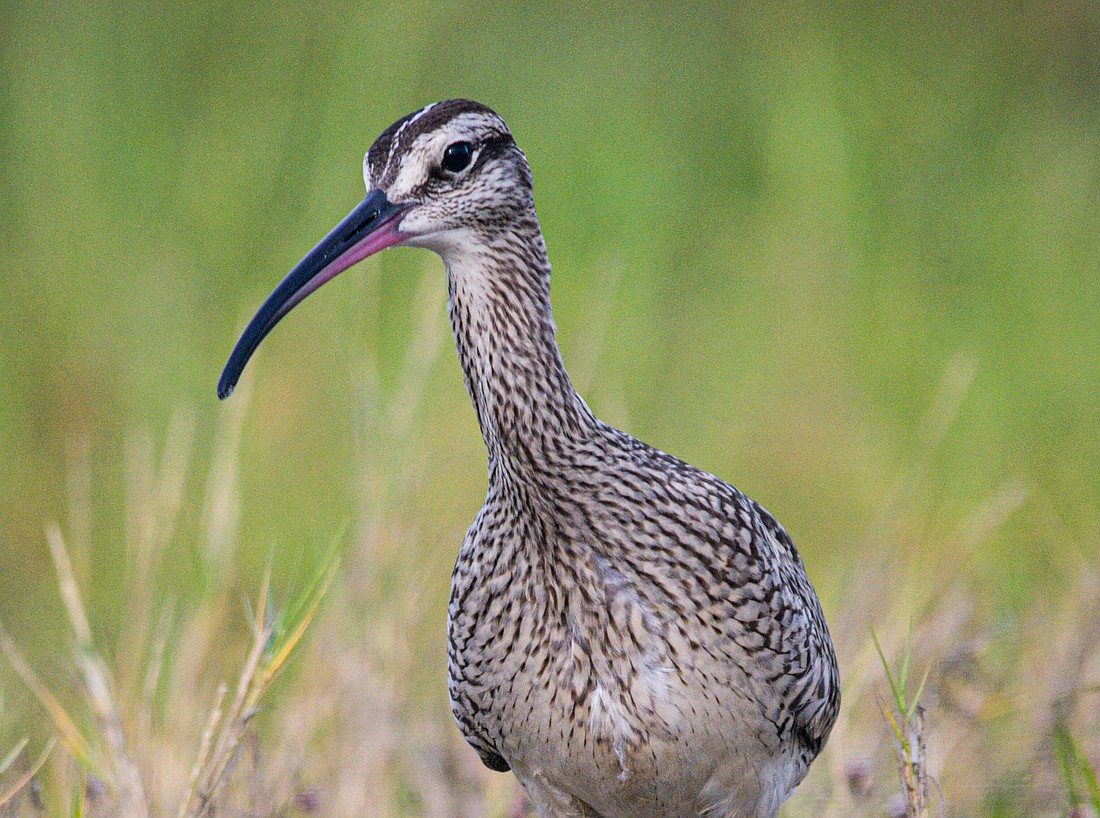- April 4, 2025
-
-
Loading

Fall migration is under way, and our shorelines are a popular rest stop for migrating shorebirds. This includes high-arctic breeding species, such as whimbrel, which are heading south from their breeding grounds to wintering areas on the north coast of South America. Though their long limbs and dark stripes on the crown of their heads make these large sandpipers stand out, the most notable field-mark of whimbrel is their long, down-curved bill.
Bird bills, which are bony, keratin-covered structures, vary across species, depending on the food they eat and their habitat. Many birds have straight beaks, adapted to general feeding and use. While other birds, such as whimbrel, have highly specialized bills, adapted to their specific needs.
The primary winter food of whimbrel is fiddler crabs. And, as the curve of their highly adapted bill matches the shape of fiddler crab burrows, it allows them to reach deep into a burrow and extract their prey. Interestingly, as different shorebird species' bills differ in length, they can forage in the same sea-side habitat, which is teeming with life beneath the surface, while rarely competing for the same food.
Hunting in the 19th century highly reduced the population of these beautiful birds. And though now protected in the United States, they're still hunted for food in parts of South America. Indeed, many populations of large, migratory shorebirds are experiencing significant declines at a global scale, due to habitat destruction, disturbance and environmental contaminants. As their foraging habitats are compressed by development and sea-level rise, Whimbrel populations are particularly vulnerable.
We can help visiting migrating birds by giving them the space they need to feed and rest up and by keeping dogs off the beach.